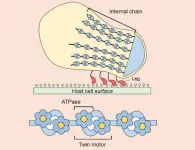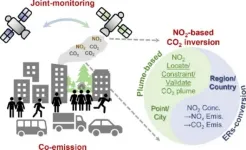Alarming levels of microplastics discovered in human brain tissue, linked to dementia
The brain contains higher concentrations of plastic particles than other organs, with elevated levels in dementia patients
2025-03-04
(Press-News.org) OTTAWA, Ontario, Canada, 4 March 2025 – In a comprehensive Commentary published today in Brain Medicine (https://doi.org/10.61373/bm025c.0020), researchers discuss alarming new evidence about microplastic accumulation in human brain tissue, providing critical insights into potential health implications and prevention strategies. This Commentary examines findings from a groundbreaking Nature Medicine article by Nihart et al. (2025) on bioaccumulation of microplastics in decedent human brains (https://doi.org/10.1038/s41591-024-03453-1).
The research reveals that human brains contain approximately a spoon's worth of microplastics and nanoplastics (MNPs), with levels 3-5 times higher in individuals with documented dementia diagnoses. More concerning still, brain tissues showed 7-30 times higher concentrations of MNPs compared to other organs like the liver or kidney.
"The dramatic increase in brain microplastic concentrations over just eight years, from 2016 to 2024, is particularly alarming," notes Dr. Nicholas Fabiano from the University of Ottawa's Department of Psychiatry, lead author of the Commentary. "This rise mirrors the exponential increase we're seeing in environmental microplastic levels."
Of particular concern are particles smaller than 200 nanometers, predominantly composed of polyethylene, which show notable deposition in cerebrovascular walls and immune cells. This size allows them to potentially cross the blood-brain barrier, raising questions about their role in neurological conditions.
The Commentary review highlights practical strategies for reducing exposure, noting that switching from bottled to filtered tap water alone could reduce microplastic intake from 90,000 to 4,000 particles per year. "Bottled water alone can expose people to nearly as many microplastic particles annually as all ingested and inhaled sources combined," says Dr. Brandon Luu, an Internal Medicine Resident at the University of Toronto. "Switching to tap water could reduce this exposure by almost 90%, making it one of the simplest ways to cut down on microplastic intake." Other significant sources include plastic tea bags, which can release millions of micro and nano-sized particles per brewing session. He also highlights that how we heat and store food matters. "Heating food in plastic containers—especially in the microwave—can release substantial amounts of microplastics and nanoplastics," he explains. "Avoiding plastic food storage and using glass or stainless steel alternatives is a small but meaningful step in limiting exposure. While these changes make sense, we still need research to confirm whether lowering intake leads to reduced accumulation in human tissues."
The research team also explores potential elimination pathways, including evidence that sweating might help remove certain plastic-derived compounds from the body. However, Dr. David Puder, host of the Psychiatry & Psychotherapy Podcast, warns, "We need more research to wrap our heads around microplastics—rather than wrapping our brains in them—since this could be one of the biggest environmental storms most people never saw coming."The commentary calls for urgent research priorities, including establishing clear exposure limits and assessing long-term health consequences of microplastic accumulation. The authors emphasize the need for large-scale human studies to determine dose-response relationships between microplastic exposure and chronic health outcomes.
The peer-reviewed Commentary article, “Human microplastic removal: what does the evidence tell us?,” appears online on 4 March 2025 in Brain Medicine (Genomic Press) and is freely accessible at https://doi.org/10.61373/bm025c.0020.
About Brain Medicine: Brain Medicine (ISSN: 2997-2639) is a peer-reviewed medical research journal published by Genomic Press, New York. Brain Medicine is a new home for the cross-disciplinary pathway from innovation in fundamental neuroscience to translational initiatives in brain medicine. The journal’s scope includes the underlying science, causes, outcomes, treatments, and societal impact of brain disorders across all clinical disciplines and their interface.
END
ELSE PRESS RELEASES FROM THIS DATE:
2025-03-04
MONTREAL, Quebec, Canada, 4 March 2025 - In a comprehensive Genomic Press Interview, distinguished neurologist and geneticist Dr. Guy A. Rouleau, OC, OQ, FRCPC, FRSC, FAAN, outlines his transformative vision for accelerating neurological disease research through open science principles. As Director of The Neuro (Montreal Neurological Institute-Hospital) and Chair of McGill University's Department of Neurology and Neurosurgery, Dr. Rouleau is spearheading a revolutionary approach to scientific collaboration that could fundamentally change how brain disease research is conducted worldwide.
"We must be honest and ...
2025-03-04
LONDON, UK, 4 March 2025 - In a comprehensive Genomic Press Viewpoint (review) article, researchers are shining a spotlight on a revolutionary approach to tackling neuroendocrine tumours (NETs), a rare but increasingly prevalent form of cancer. Published in Brain Medicine today, a peer-reviewed article titled "Alpha particle therapy for neuroendocrine tumours: A focused review" explores how targeted alpha therapy (TAT) could redefine treatment for patients where surgery is not an option. Authored by Dr. Kalyan M Shekhda, Dr. Shaunak Navalkissoor, and Emeritus ...
2025-03-04
GUELPH, Ontario, Canada, 4 March 2025 – In an exclusive Genomic Press Interview, Dr. Melissa Perreault reveals how her research is reshaping neuroscience by merging cutting-edge science with Indigenous knowledge. As a professor in the Department of Biomedical Sciences at the University of Guelph and a member of the Royal Society of Canada, Dr. Perreault’s work spans neurobiology, ethical research practices, and the therapeutic potential of psychedelics—all while championing Indigenous representation in STEM.
Raised in a low-income, single-parent household, she was the first in her family to attend university. As she navigated academia, she encountered ...
2025-03-04
Researchers at the University of Gothenburg have discovered that what was previously thought to be a unique seaweed species of bladderwrack for the Baltic Sea is in fact a giant clone of common bladderwrack, perhaps the world's largest clone overall. The discovery has implications for predicting the future of seaweed in a changing ocean.
In the brakish waters of the Baltic Sea, bladderwrack is the dominant seaweed species as it is one of the few seaweed species that can tolerate low salinity.
The ...
2025-03-04
Mycoplasmas, including bacteria that cause pneumonia in humans, are generally nonmotile, but Mycoplasma mobile, as the species name suggests, has been found in the gills of fish and seems to move by gliding along surfaces. The molecular structure that allows it to do so has for the first time been uncovered by a collaborative research group led by Osaka Metropolitan University Professor Makoto Miyata of the Graduate School of Science.
The OMU-led research team has been working since 1997 to clarify M. mobile’s motility mechanisms. ...
2025-03-04
One-third of Canadian adults aged 55 or older are nutritionally at risk, potentially leading to increased hospital stays, more emergency visits and physician consultations for possible infections, a new study found.
The University of Waterloo researchers assessed data from more than 22,000 community-dwelling adults aged 55 and over from the Canadian Longitudinal Study on Aging. After an initial evaluation, they followed up with participants up to three years later to track their health-service use over the previous year.
Researchers used the SCREEN-8 tool (Seniors ...
2025-03-04
Reliable and accurate monitoring of CO2 emissions is a cornerstone of effective climate change mitigation strategies. While traditional methods largely depend on ground-based measurements and bottom-up inventories, these approaches are often resource-intensive and prone to errors. Satellite Technology has emerged as a promising alternative, but the challenge remains in distinguishing anthropogenic emissions from natural processes. The long atmospheric lifetime of CO2 makes it difficult to pinpoint localized sources of emissions and track changes over time. Additionally, natural emissions and background concentrations ...
2025-03-04
The teaching and research section is the fundamental organizational unit for teaching and research in a university, and the virtual teaching and research section (VTRS) is a crucial exploration for the digital transformation of new basic teaching organization construction in the information age. However, this new type of organization transcends university and spatial boundaries, and motivating participants and sustaining their engagement is a key challenge in VTRS operation. The VTRS for database courses (VTRS-DB) proposes an open community-based operating model, founded on the core concepts of "openness, dedication, competition, and orderliness." ...
2025-03-04
Six out of every ten people globally lack access to safe medical oxygen, resulting in hundreds of thousands of preventable deaths each year and reducing quality of life for millions more, an international report co-authored by the University of Auckland has found.
Associate Professor Stephen Howie from the University’s Faculty of Medical and Health Sciences (FMHS) was an adviser to the Lancet Global Health Commission on Medical Oxygen Security and co-author of its report Reducing global inequities in medical oxygen access released 18 February.
A key finding shows global access to medical oxygen is highly inequitable. Five billion ...
2025-03-04
In a crowning achievement, the University of Auckland Business School is one of the best in the world, successfully gaining triple crown accreditation - a mark of excellence held by only one percent of business schools globally.
The Business School was the first in Australasia to attain triple crown status in 2004, a recognition it has maintained for two decades.
Triple crown status is achieved if a business school can meet the strict requirements of three international accreditation bodies – the Association to Advance ...
LAST 30 PRESS RELEASES:
[Press-News.org] Alarming levels of microplastics discovered in human brain tissue, linked to dementia
The brain contains higher concentrations of plastic particles than other organs, with elevated levels in dementia patients









